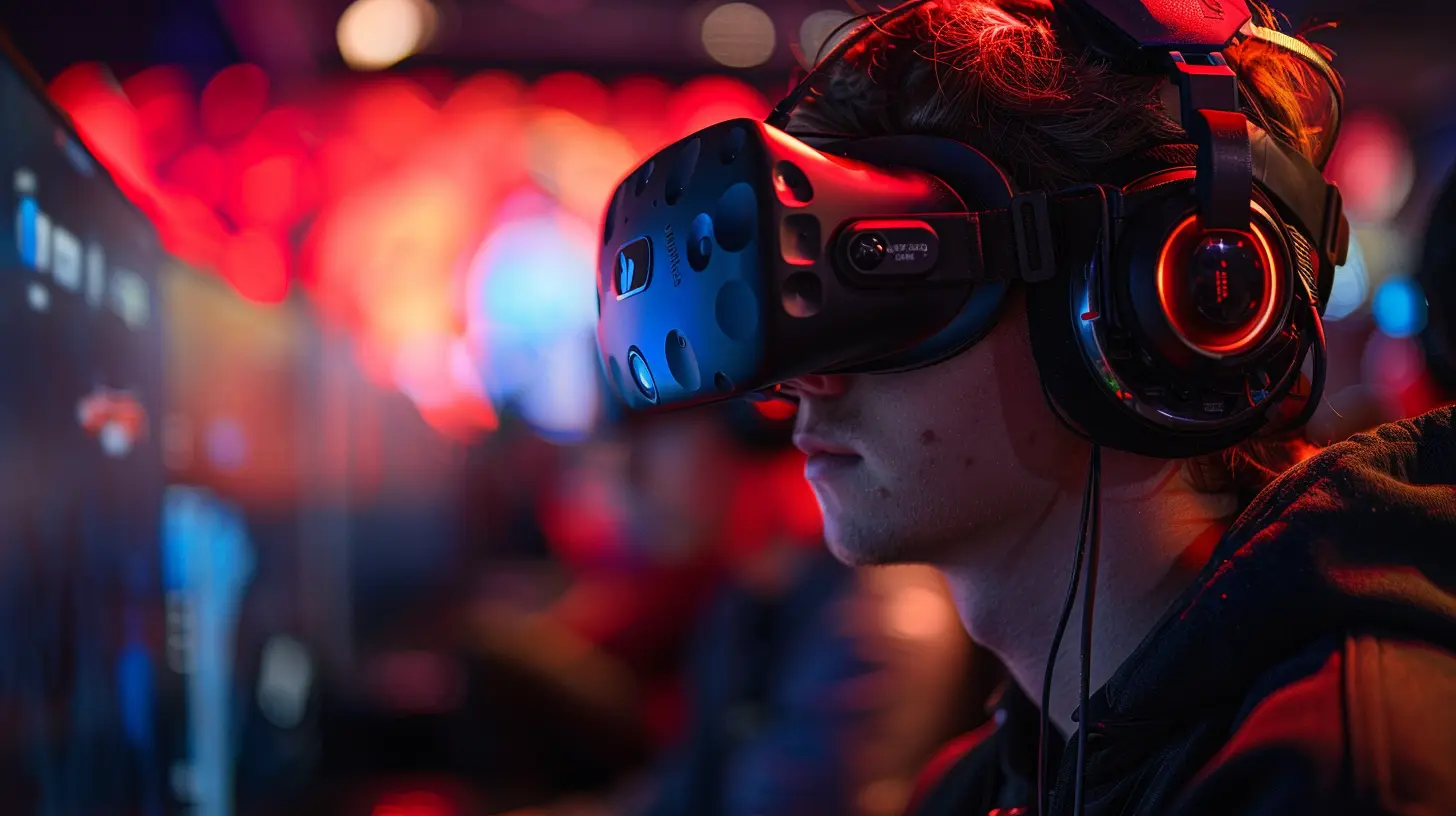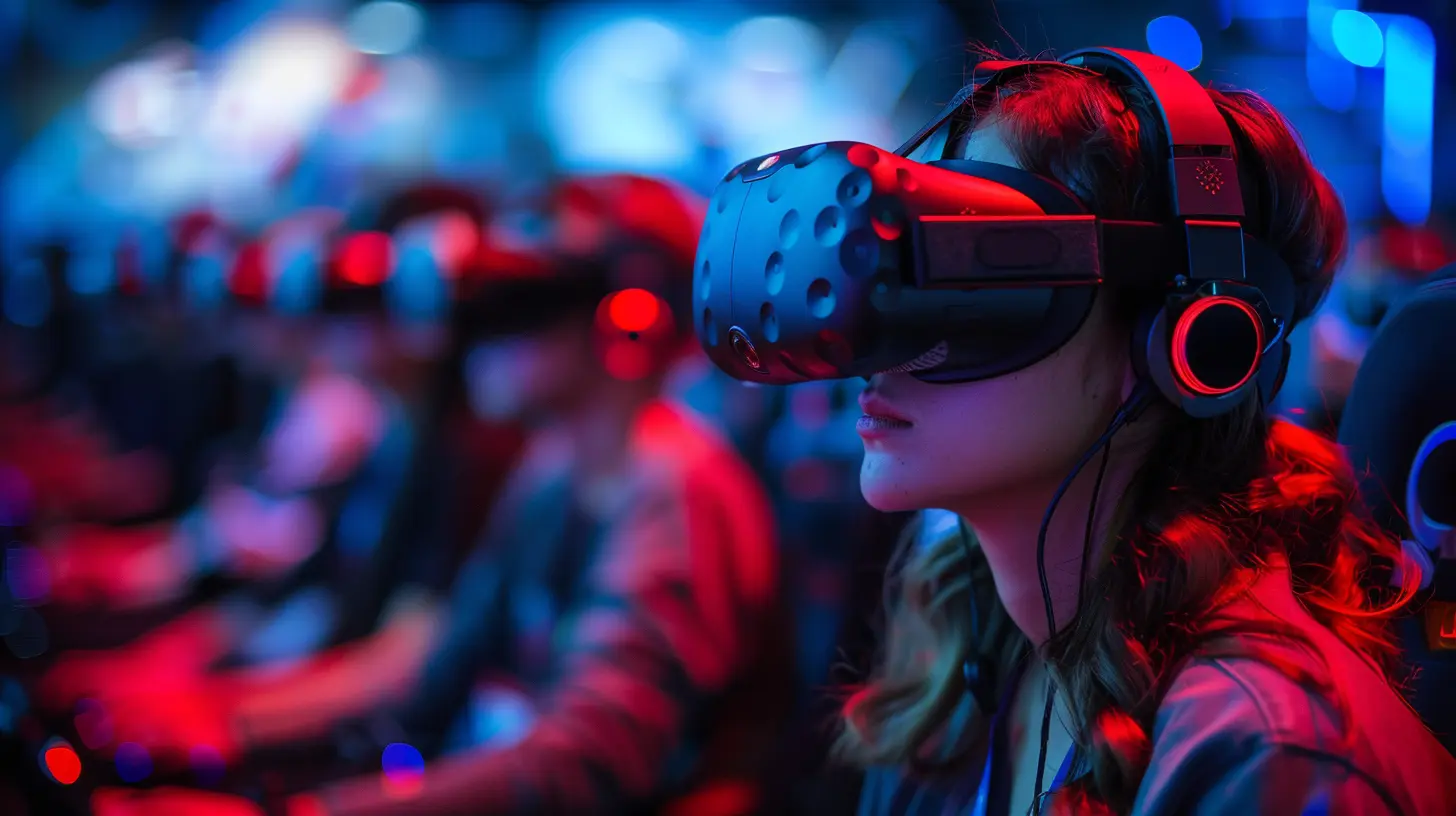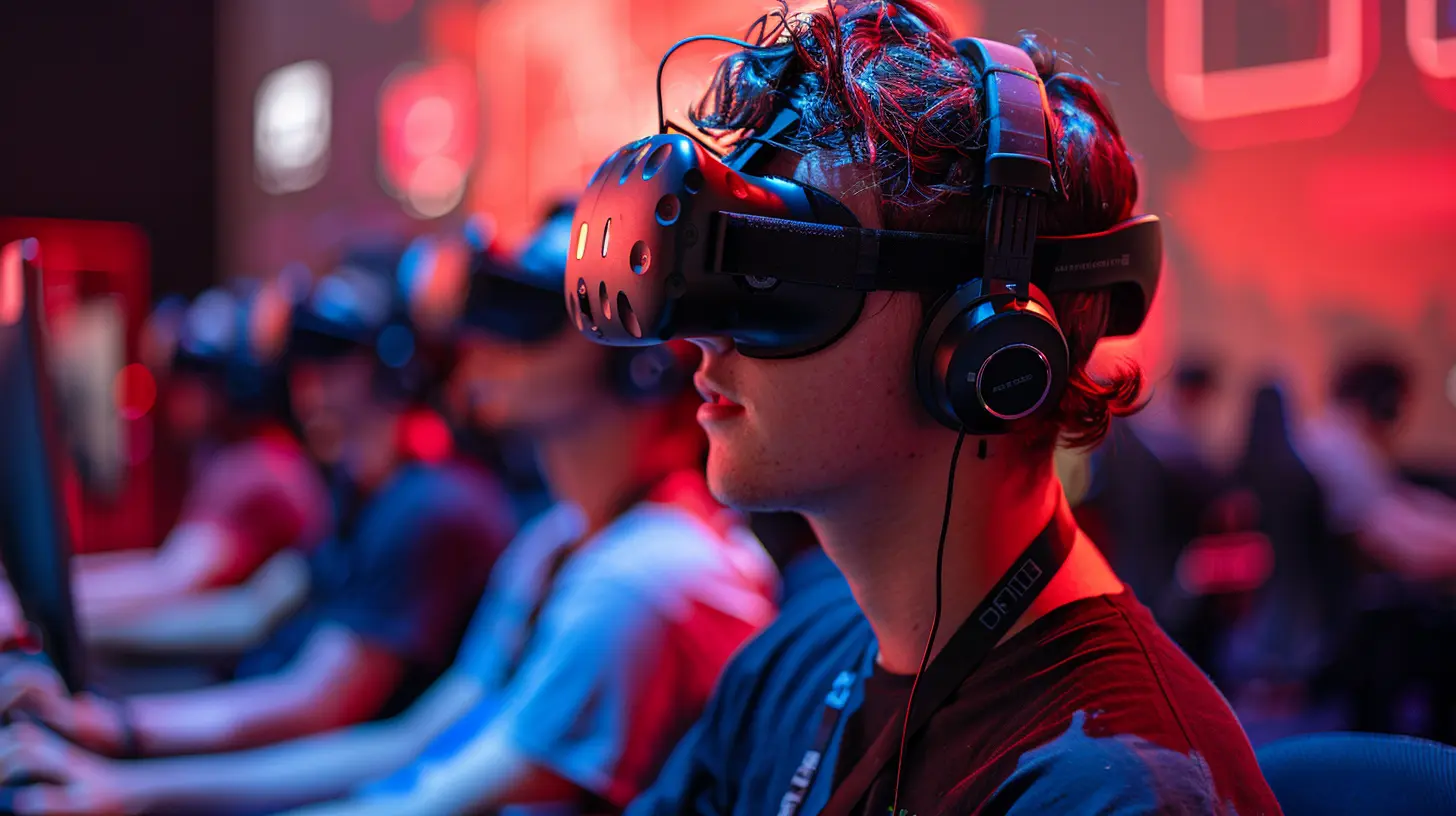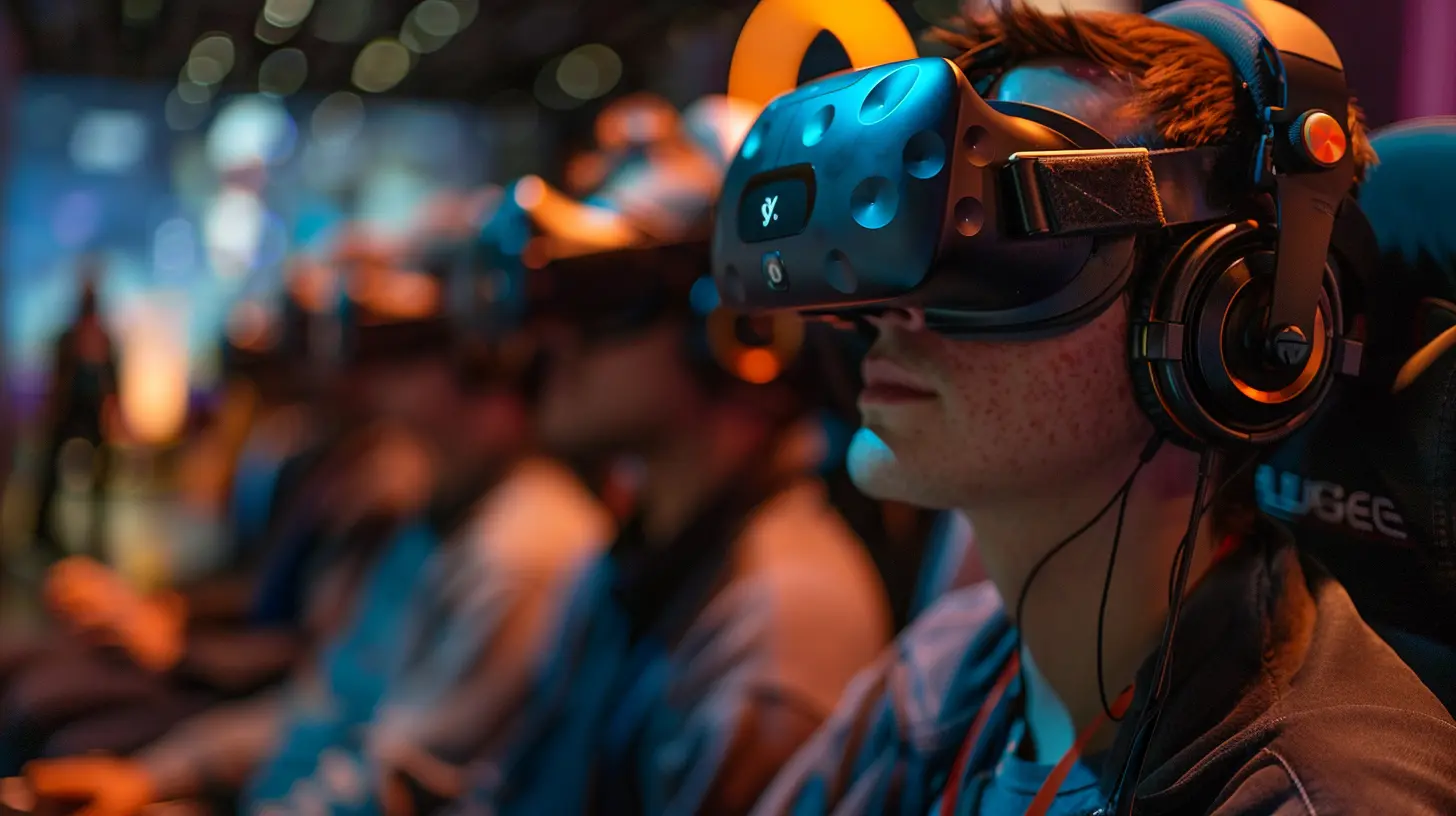The Future of VR in Competitive Gaming Tournaments
6 August 2025
Virtual Reality (VR) is not just a buzzword floating around in the tech space anymore. It’s real, it’s exciting, and it’s transforming industries faster than you can imagine. One area where VR is poised to make a massive leap is competitive gaming tournaments. Esports and VR? Sounds like a match made in heaven, right? But how does this fusion of immersive tech and competitive gaming play out? And more importantly, where is it headed? Let’s dive in! 
The Rise of VR in Gaming
Okay, let’s start with the basics. VR gaming has been around for a while, but it wasn’t always the showstopper it is today. Remember those clunky headsets and limited game options from a few years ago? Not the most inspiring, I know. Fast forward to now, and we’ve got sleek devices like the Meta Quest 3, HTC Vive, and PlayStation VR2 redefining what’s possible.But VR isn’t just about great graphics or convincing environments—it’s about immersion. It takes you into the game, making you feel like you’re truly part of the action. You’re not just pushing buttons on a controller; you’re physically dodging punches, aiming your weapon, or casting spells. It’s this sense of total engagement that’s making VR an attractive proposition for competitive gaming. 
Why Competitive Gaming Needs VR
Competitive gaming—or esports—has exploded over the past decade. What started as a niche hobby is now a global phenomenon with millions of fans, billion-dollar prize pools, and professional players who train like athletes. But, let’s face it: there’s only so much connection you can feel watching someone click a mouse or tap keys on a screen.Enter VR.
VR can bridge the gap between players and audiences in a way that no other gaming format can. Imagine watching a VR esports tournament where the camera follows players in a fully immersive game world. Spectators could tune in with their own VR headsets and experience the action alongside their favorite gamers. Now that’s next-level engagement!
And for the players? VR introduces a physicality to competitive gaming that’s hard to replicate elsewhere. Skill in VR isn’t just about reactions and strategy; it’s about movement, timing, and even stamina. It’s gaming… but with a sprinkle of actual athleticism. 
The Technology Driving the Future
Let’s geek out for a second. The tech behind VR gaming is moving at warp speed, and this is why it’s destined to shape competitive gaming tournaments.1. Hardware Improvements
Headsets are getting lighter, more comfortable, and more accessible. Advanced screen resolutions, wider fields of view, and improved tracking systems are making the VR experience smoother and more engaging. Goodbye, motion sickness!2. Haptic Feedback
Ever used a controller that vibrates? VR haptic technology takes that to a whole new level. Gloves, vests, and even full-body suits can simulate touch, impact, and other in-game sensations. You might feel a sword strike or the rumble of an explosion. Cool, right?3. 5G and Cloud Gaming
With 5G and cloud gaming stepping up, latency—a crucial issue for competitive gaming—is no longer a deal-breaker. Players from around the globe can compete without worrying about lag ruining their epic moments.4. AI Integration
AI continues to revolutionize game design and performance analysis. In the VR esports space, advanced AI could be used to monitor and improve player techniques or even analyze spectator behavior to enhance viewer experiences.
Challenges to Overcome
Of course, it’s not all sunshine and rainbows. Like any groundbreaking tech, VR in competitive gaming faces its fair share of challenges. Here are a few:Cost
Let’s be real for a second—VR gear isn’t cheap. While casual gamers can justify spending a few hundred bucks on a console, a full VR setup can cost you an arm and a leg. Competitive gaming tournaments would need to make VR more accessible to players who may not have the resources to invest.Physical Strain
Unlike traditional gaming, VR involves a lot of physical effort. And while that’s part of its charm, it can also lead to fatigue or even injuries. Competitive tournaments might need to rethink match durations and create rules to maintain player well-being.Learning Curve
VR games are just… different. They require a unique set of skills that many players and developers are still figuring out. For some, this steep learning curve could be a roadblock to widespread adoption.The Potential Impact on Esports
So, what does all of this mean for the future of esports? Well, VR could completely redefine how we see competitive gaming.For one, it has the potential to attract an entirely new audience. People who might’ve dismissed esports as “just watching someone else play a game” could be drawn in by the physicality, immersion, and sheer spectacle of VR competitions.
Secondly, it could elevate players to celebrity status in a way traditional esports hasn’t quite managed yet. Think about it—if a VR gamer’s physical performance and expressions are on display for the world to see, they become more relatable, more engaging, and more human. It’s like combining the intense strategy of chess with the showmanship of WWE.
And let’s not forget about the business side of things. With VR tournaments offering more immersive advertising opportunities (ever thought of product placements inside the game environment?), there’s money to be made for organizers, sponsors, and even the players themselves.
What’s Next?
Alright, so where do we go from here? The future of VR in competitive gaming tournaments depends on a few big players—gaming companies, tournament organizers, and you, the community!The gaming industry will need to continue refining VR technology while also addressing its accessibility challenges. Tournament organizers will have to experiment with formats, rules, and spectator experiences to make VR tournaments viable and exciting.
And for us gamers? Well, we need to stay curious, supportive, and open-minded. After all, esports wouldn’t exist without player passion and creativity. So maybe it’s time to dust off that VR headset—or invest in one—and see what all the hype is about!
Closing Thoughts
The future of VR in competitive gaming tournaments isn’t just exciting—it’s inevitable. Sure, it’ll take time to overcome the challenges, but the potential rewards are astronomical. Picture a world where gaming tournaments aren’t just a spectator sport but an experience that pulls you into the action, blurring the line between player and viewer. That’s what VR can bring to the table.We’re standing at the edge of a gaming revolution, and VR is the rocket ship ready to launch us into a whole new universe. My advice? Buckle up—it’s going to be an epic ride!
all images in this post were generated using AI tools
Category:
TournamentsAuthor:

Tayla Warner
Discussion
rate this article
1 comments
Briar McAnally
Sure, because falling in VR is competitive!
August 14, 2025 at 5:05 PM

Tayla Warner
Absolutely! The immersive nature of VR can add a unique layer of challenge and excitement to competitive gaming.


